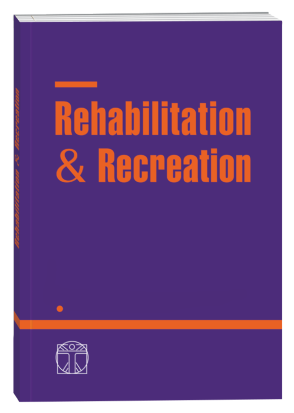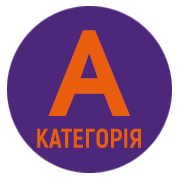DRY NEEDLING IN THE THERAPY OF MUSCULO-FASCIAL TRIGGER POINTS
Keywords:
trigger points, dry needling, myofascial painAbstract
Myofascial pain is a common complaint reported by patients. A characteristic feature of this pain is the presence of trigger points, which are defined as hyperactive nodules. Trigger points can be active or latent. Active trigger points cause pain at rest as well as during movement, while latent trigger points only cause pain when the area is touched. The pain associated with trigger points is described as deep, distant and dull. It is often accompanied by a tingling or burning sensation. Patients often report, in addition to pain, changes in superficial and deep sensation, as well as the appearance of vegetative symptoms. The correct diagnosis is based on an accurate history and physical examination. The therapeutic methods used by physiotherapists to treat musculoskeletal pain include manual techniques, physical therapy, and other methods such as dry needling. Dry needling therapy has become increasingly popular in recent years. This therapy consists of pricking the affected areas with dry needles. This procedure leads to contraction of the muscle, causing the whole muscle to relax. Before starting the therapy, the patient should be made aware of the possible side effects. The most common include pain at the puncture site and haemorrhage, as well as syncopal reactions. Dry needling as a therapy for musculo-fascial trigger points was first applied by Karel Lewit in 1979. This marked the beginning of research into the effectiveness of dry needling therapy for trigger points. The following article discusses research on the effectiveness of dry needling in the therapy of musculo-fascial trigger points. It also focuses on comparing dry needling therapy with other therapies used by physiotherapists. Studies examining the effectiveness of short-term and long-term effects of dry needling were analysed. An attempt was made to check the incidence of side effects during the therapy.
References
Barbero M., Bertoli P., Cescon C.,Macmillan F., Coutts F., Roberto R.: Intra-rater reliability of an experienced physiotherapist in locating myofascial trigger points in upper trapezius muscle, J Man Manip Ther. 2012; 20(4):171-7.
Barbero M., Schneebeli A., Koetsier E.,Maino P.: Myofascial pain syndrome and trigger points: evaluation and treatment in patients with musculoskeletal pain, Curr Opin Support Palliat Care. 2019;13(3):270-276.
Boyce D., Wempe H., Campbell C.,Fuehne S., Zylstra E., Smith G., Christopher Wingard CH., Jones R.: Adverse events associated with therapeutic dry needling, Int J Sports Phys Ther. 2020;15(1):103-113.
Boyles R., Fowler R., Ramsey D.,Burrows E.: Effectiveness of trigger point dry needling for multiple body regions: a systematic review, J Man Manip Ther. 2015;23(5):276-293.
Chochowska M., Marcin Wytrążek M.,Marcinkowski J.,Huber J.: Zespół bólu mięśniowo-powięziowego– etiologia, patogeneza, symptomatologia, Fizjoterapia. 2012, 20 (2): 89-96.
Dommerholt J., Bron C.,FranssenJ.:Myofascial Trigger Points: An Evidence-Informed Review,The Journal of Manual & Manipulative Therapy, 2006, 14 (4), 203–221.
Doğan N., Şengül İ., Akçay-YalbuzdağŞ., Kaya T.: Kinesio taping versus dry needling in the treatment of myofascial pain of the upper trapezius muscle: A randomized, single blind (evaluator), prospective study, J Back Musculoskelet Rehabil. 2019;32(5):819-827.
Espejo-AntúnezL.,Fernández-Huertas.,J., Albornoz-Cabello M., Rodríguez-MansillaJ., Cruz-Torres B., Ribeiro F., Silva A.: Dry needling in the management of myofascial trigger points: A systematic review of randomized controlled trials, Complement Ther Med. 2017;33:46-57.
Fernández-de-Las-Peñas C., Nijs J.:Trigger point dry needling for the treatment of myofascial pain syndrome: current perspectives within a pain neuroscience paradigm, J Pain Res. 2019; 12: 1899–1911.
Gattie E., Cleland JA., Snodgrass S.: Asurvey of American physical therapists' current practice of dry needling: Practice patterns and adverse events, Musculoskelet Sci Pract. 2020;50:102255.
Gattie E., Cleland JA., Snodgrass S.:The Effectiveness of Trigger Point Dry Needling for Musculoskeletal Conditions by Physical Therapists: A Systematic Review and Meta-analysis, J Orthop Sports Phys Ther. 2017;47(3):133-149.
Gerber LH., Shah J., Rosenberger W.,Armstrong K., Turo D., Otto P., Heimur J., Thaker N. , Sikdar S.: Dry Needling Alters Trigger Points in the Upper Trapezius Muscle and Reduces Pain in Subjects With Chronic Myofascial Pain, PM R. 2015;7(7):711-718.
Gerber LH., Sikdar S., Aredo JV.,Armstrong K., Rosenberger WF., Shao H., Shah JP.: Beneficial Effects of Dry Needling for Treatment of Chronic Myofascial Pain Persist for 6 Weeks After Treatment Completion, PM R. 2017;9(2):105-112.
Jutrzenka-Jesion J., Chochowska M.,Hojan-Jezierska D.: Fizjoterapia w leczeniu mięśniowo-powięziowych punktów spustowych Physiotherapy in the treatment of myofascial trigger points, Hygeia Public Health. 2018, 53(4): 340-347.
Kalichman L., Vulfsons S.: DryNeedling in the Management of Musculoskeletal Pain, The Journal of the American Board of Family Medicine. 2010, 23 (5) 640-646.
Lewit K.: The needle effect in the reliefof myofascial pain, Pain. 1979;6(1):83-90.
Luan Sh., Zhu Z., Ruan JL., Lin CN.,Ke SJ., Xin WJ., Liu CC., Wu SL., Ma Ch.: Randomized Trial on Comparison of the Efficacy of Extracorporeal Shock Wave Therapy and Dry Needling in Myofascial Trigger Points, Am J Phys Med Rehabil. 2019;98(8):677-684.
Manafnezhad J., Salahzadeh Z., SalimiM., Ghaderi F., Ghojazadeh M.: The effects of shock wave and dry needling on active trigger points of upper trapezius muscle in patients with non-specific neck pain: A randomized clinical trial, J Back Musculoskelet Rehabil. 2019;32(5):811-818.
Martín-Pintado-Zugasti A., Del MoralOM., Gerwin RD., Fernández-Carnero J.: Post-needling soreness after myofascial trigger point dry needling: Current status and future research, J Bodyw Mov Ther. 2018 ;22(4):941-946.
Meulemeester K., Castelein B., Coppieters I., Barbe T., Cools A., Cagnie B.: Comparing Trigger Point Dry Needling and Manual Pressure Technique for the Management of Myofascial Neck/Shoulder Pain: A Randomized Clinical Trial, J Manipulative Physiol Ther. 2017 ;40(1):11-20.
Morihisa R., 1Eskew J., McNamara A.,Young J.: Dry needling in sucjects with muscular trigger points in the lower quarter: a systematic review, Int J Sports Phys Ther. 2016 ;11(1): 1–14.
Pecos-MartínD., Montañez-Aguilera FJ., Gallego-Izquierdo T., Urraca-Gesto A., Gómez-Conesa A., Romero-Franco N., Plaza-Manzano G.: Effectiveness of dry needling on the lower trapezius in patients with mechanical neck pain: a randomized controlled trial, Arch Phys Med Rehabil. 2015;96(5):775-81.
Richter P., Hebgen E., Punkty spustowei łańcucgy mięśniowo-powięziowe w osteopatii i terapii manualnej, Wydawnictwo Galaktyka, Łódź 2010: 113-128.10
Shah JP., Thaker N., Heimur J., Aredo JV., Sikdar S., Gerber L.:Myofascial Trigger Points Then and Now: A Historical and Scientific Perspective, PM R. 2015; 7 (7): 746-761.
Ziaeifar M., Arab AM., MosallanezhadZ., Nourbakhsh MR.: Dry needling versus trigger point compression of the upper trapezius: a randomized clinical trial with two-week and three-month follow-up, J Man Manip Ther. 2019; 27(3): 152-161.
Downloads
Published
How to Cite
Issue
Section
License

This work is licensed under a Creative Commons Attribution-NonCommercial-NoDerivatives 4.0 International License.












